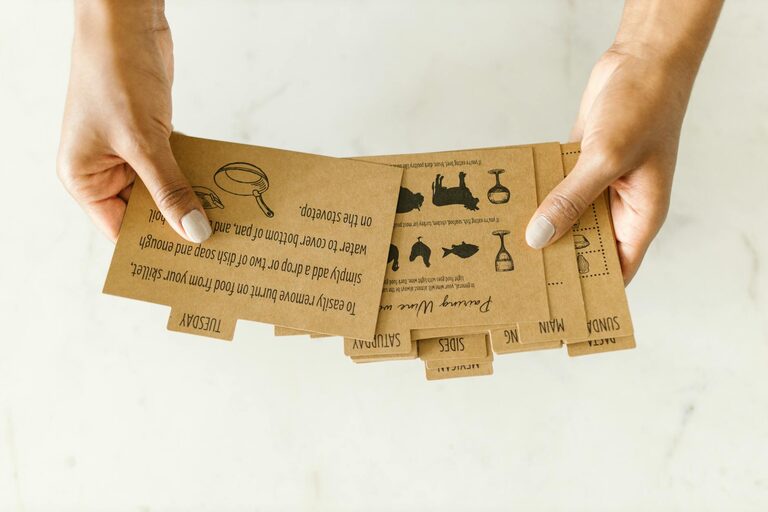Creating a weekly meal plan can be a game-changer for anyone looking to save time, eat healthier, and reduce the daily stress of deciding what to cook. If you are new to meal planning or looking for a straightforward way to get started, this guide will walk you through simple steps to create a functional and flexible weekly meal plan.
Why Plan Your Meals Weekly?
Meal planning helps you:
– Save time by reducing last-minute decisions
– Minimize food waste through organized shopping
– Eat balanced and nutritious meals
– Lower food costs by buying in bulk or on sale
– Reduce stress around cooking and mealtimes
Even a simple plan can provide these benefits, so there’s no need to overcomplicate things.
Step 1: Assess Your Week Ahead
Begin by looking over your upcoming week to understand your schedule. Consider:
– Work hours or school days
– Social engagements or events
– Days when you have more or less time to cook
– Any special plans for meals (e.g., dinner with friends)
Knowing this will help you decide how many meals to plan and which days might call for quick or make-ahead options.
Step 2: Choose Your Planning Format
You can plan your meals using whatever method suits you best:
– Printable meal planning templates
– A simple notebook or planner
– Digital tools or apps
– Whiteboard or calendar in the kitchen
Keep it visible and easy to update. This helps keep the plan flexible as your week unfolds.
Step 3: Start With Your Meals
Focus on the main meals you want to plan—typically dinner—and add breakfast and lunch ideas as needed.
Create a Dinner Framework
– Pick 3 to 5 dinner ideas that you enjoy and that can be repeated or varied easily throughout the week.
– Include a mix of proteins like chicken, fish, beans, or tofu.
– Incorporate vegetables and simple sides such as rice, pasta, or salad.
– Add versatility by planning leftovers for lunches or second dinners.
Breakfast and Lunch Basics
Breakfasts can be simple: oatmeal, eggs, smoothies, yogurt, or toast. Plan lunches based on leftovers, sandwiches, salads, or easy-to-pack meals.
Step 4: Make a Grocery List
Once your meals are decided, write down all the ingredients you need. Organize your list by sections in the store like:
– Produce
– Dairy
– Meat and protein
– Pantry staples
– Frozen foods
Check your kitchen first for items you already have to avoid buying duplicates.
Step 5: Prep What You Can in Advance
Batch cooking or prepping ingredients ahead saves time on busy days. Some ideas include:
– Chopping vegetables and storing them in airtight containers
– Cooking grains such as rice or quinoa in bulk
– Preparing sauces or dressings
– Cooking proteins partially or fully, then refrigerating or freezing
Even spending 30 minutes after shopping prepping can make weekday cooking easier.
Step 6: Be Flexible and Keep It Simple
Remember, your plan is a guide, not a strict rule. Life happens, so it’s okay to swap days or improvise with what you have. Keep meals straightforward, especially if you’re new to meal planning.
Tips for Keeping It Simple
– Use one-pot or sheet-pan recipes
– Rely on pantry staples and frozen veggies
– Incorporate quick meals like stir-fries, omelets, or pasta dishes
– Don’t shy away from semi-homemade meals (e.g., adding fresh veggies to store-bought sauces)
Sample Simple Weekly Meal Plan
Here’s an example to inspire your own plan:
| Day | Breakfast | Lunch | Dinner |
|———–|——————–|——————–|—————————–|
| Monday | Oatmeal with fruit | Leftover pasta | Grilled chicken with salad |
| Tuesday | Yogurt and nuts | Chicken salad wrap | Stir-fry with mixed veggies |
| Wednesday | Smoothie with spinach | Quinoa salad | Sheet-pan salmon with asparagus |
| Thursday | Scrambled eggs | Leftover stir-fry | Tacos with beans and rice |
| Friday | Toast with avocado | Soup and sandwich | Homemade pizza with veggies |
| Saturday | Pancakes | Leftover soup | Pasta with tomato sauce |
| Sunday | Fruit and cereal | Salad with nuts | Roast chicken and potatoes |
Final Thoughts
Starting with a simple weekly meal plan can reduce your time in the kitchen and make meals more enjoyable. As you get comfortable, you can experiment with more complex recipes or bulk cooking. The key is to build a routine that fits your lifestyle and tastes.
Give meal planning a try this week—you might be surprised how much easier and more satisfying mealtime can become!
—
Happy cooking and planning!



